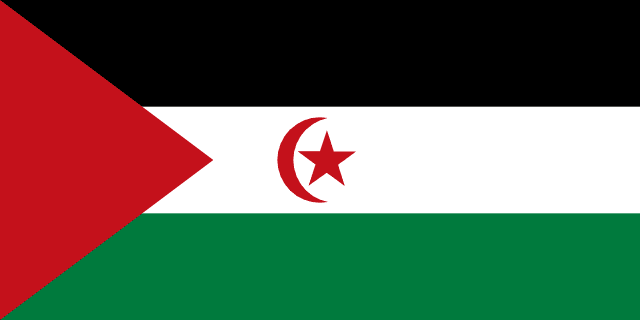Country Information
| Sovereign State | No (Disputed Territory) |
| Country Codes | EH, ESH |
| Official Name | Sahrawi Arab Democratic Republic (SADR) (claimed by Western Sahara) |
| Continent | Africa |
| Capital | El Aaiún (Laâyoune) (Claimed by Morocco, Tifariti (claimed by SADR) |
| Government Type | Partially recognized state; territory mostly occupied by Morocco |
| Currency | Moroccan Dirham (MAD) |
| Calling Code | +212 |
| Member Of | African Union (SADR as a member) |
| Population | Estimated 500,000-600,000 |
| Total Area | Approximately 266,000 square kilometers |
| Highest Point | Unnamed location near the border with Mauritania (463 meters, 1,519 feet) |
| Lowest Point | Sebjet Tah (55 meters below sea level) |
| GDP Per Capita | Not well established due to the disputed status |
| Life Expectancy | Not well established |
| Internet TLD | .eh (not widely used) |
Western Sahara National Anthem
Yā Banīy As-Saharā (O Sons of the Sahara)
O Sons of the Sahara!
In the battlefield, you have only your rights,
And the fire of the gun.
O Sons of the Sahara!
Resist for your rights!
Let your enemy suffer from your revolution.
This is the voice of the victims calling every day,
And the voice of the gun is the sound of our melody.
We are determined to liberate
The soil of our nation,
On which we have sacrificed ourselves and our blood.
We are the children of the Sahara,
And we are in a state of war.
Flags of Neighboring Countries



History of the Western Sahara Flag
The flag of Western Sahara is a symbol of the Sahrawi people’s struggle for independence and is used by the Sahrawi Arab Democratic Republic (SADR), a partially recognized state claiming sovereignty over the entire territory of Western Sahara. The flag was officially adopted on February 27, 1976.
The design consists of three horizontal stripes of black, white, and green, with a red triangle based at the hoist. These colors are typical of Pan-Arab symbolism. Black represents the dark past of the Sahrawi people, white symbolizes peace, green stands for the beauty of the territory and red represents the blood shed in the struggle for freedom.
This flag is modeled after the Palestinian flag, reflecting the shared experience of displacement and struggle for statehood. The addition of the red triangle differentiates it and adds a unique aspect representing the revolutionary struggle.
The flag of Western Sahara is often seen at international events, representing the Sahrawi people’s aspirations for self-determination and independence. Despite the ongoing conflict and lack of widespread international recognition, the flag remains a powerful
symbol of the Sahrawi identity and their ongoing struggle.
The history of this flag is deeply intertwined with the Western Sahara conflict, a territorial dispute between the Sahrawi people led by the Polisario Front and the Kingdom of Morocco. The flag is not officially recognized by the United Nations or by many countries due to the disputed status of Western Sahara. However, it is recognized by the African Union and is used in areas controlled by the SADR.
Throughout its history, the flag has become a symbol of resistance and resilience for the Sahrawi people. It is frequently displayed in protests and international forums to draw attention to their cause. The flag’s prominence in the Sahrawi refugee camps in Tindouf, Algeria, signifies its importance as a symbol of national identity and the desire for an independent state.
In conclusion, the flag of Western Sahara represents more than just the territory’s geographic and political status; it embodies the spirit of a people’s longing for recognition, dignity, and autonomy. Despite the complex and unresolved nature of the Western Sahara conflict, the flag continues to be a rallying point for the Sahrawi people and their aspirations.

